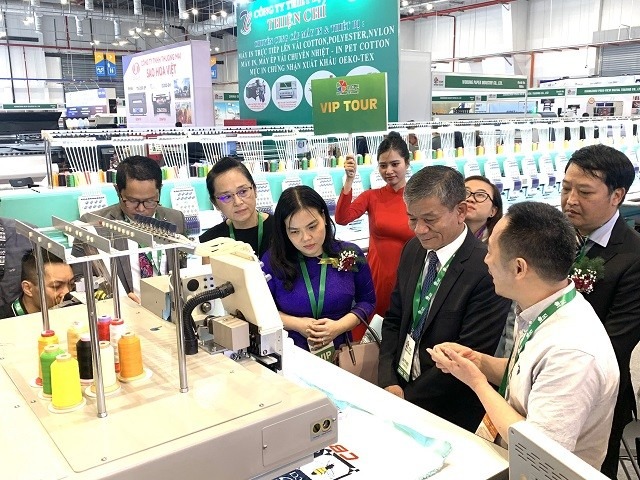25/09/2024
Fashion in crisis: Trapped by synthetics
Many fashion giants such as Shein, Inditex, and Boohoo, have failed to reduce their reliance on synthetic fibers, according to a recent report by the Changing Markets Foundation.
Shein, a leader in fast fashion retail in terms of revenue, has been found to use the largest amount of synthetic materials. Specifically, 71% of its fiber mix is made up of polyester (65%), nylon (3%) and spandex (3%).
The report indicates that this figure could even be higher if the “other” category, which accounts for 13% of Shein’s fiber portfolio, includes additional synthetics such as elastane. Boohoo closely follows with 69% of its total fiber being made from synthetics.
In 2022, Boohoo topped the report for synthetic usage, while Shein had not disclosed its synthetic fiber data over this period. These are just a few names on the list of companies that increasingly depend on fossil-fuel-derived materials, which, according to a study in 2022, includes a quarter of the world’s most prominent fashion companies.
“Polyester has been a major driving force behind fast fashion,” said Urška Trunk, campaign manager at the organization. The industry’s dependance on fossil fuels undermines its sustainability claims, particularly in a time of climate change.

Synthetic fibres, derived from fossil fuels like oil and gas, contribute to climate change. The production of polyester, which emitted 125 million tonnes of CO2 in 2022, equals the annual emissions of 32 coal-fired power plants.
A 2022 report linked polyester use in fashion brands to Russian oil and controversial fossil fuel sources, exacerbating environmental and political concerns.
Beyond the environmental concerns, Trunk also stressed growing health risks from microfibers shedding from these materials.
Scientists in Brazil have discovered microplastics derived from polypropylene, polyamide, and nylon in human brain tissue. These tiny plastic particles have also been found in human blood, breast milk, and every tested human placenta.
Inhaling or ingesting microplastics has been associated with chronic inflammation, cancer, heart disease, and asthma. The health risks are particular concerning for vulnerable groups.
Children under six face an even greater threat, as they inhale three times more microplastics than adults, putting them at higher risk for related health issues.
In April, the Changing Markets Foundation contacted 50 global apparel companies. requesting transparency on topics such as use of synthetic materials and commitments to phase them out.
Disappointingly, more than half (54%) either partially or fully failed to respond, a notable increase from 44% in 2022 and 17% in 2021. Even more alarming, according to Trunk, was that nearly all the companies that did respond admitted to increasing their use of synthetic materials.
Trunk stressed that even brands claiming to maintain steady volumes of synthetic fibers should be scrutinized if their overall production is growing, as they may obscure the real growth of synthetic usage.
Inditex, for instance, reported the highest volume of synthetic fiber use in 2023 at 212,886 metric tons – nearly a 20% jump from 2022, at 178,030 metric tons.
Shein has announced to commit reducing dependence on virgin polyester. By 2030, the company aims to transition 31% polyester to recycled versions.
In 2023, recycled polyester accounted for 7.9% of the polyester used in Shein’s products, an increase from less then 1% in 2022.
Shein, together with Donghua University, has incorporated 100,000 kilograms of such materials into its products. The company is also involved in research on fiber fragmentation as a member of the Microfiber Consortium.
Inditex aims to alleviate the use of synthetic materials, but admit the challenge of phasing them out in high-performance garments like jackets without compromising durability. The company is investing in innovative textile-to-textile recycling and bio-based alternatives.
It has spent €70 million ($78 million) to secure Ambercycle’s Cycora, a recycled polyester made from textile waste. By 2030, Inditex expects approximately 25% of its fiber to come from next-generation sources that are still in development.
Boohoo declined to comment on the report, and Lululemon did not respond to requests for a statement.
Trunk criticized these efforts, calling them “greenwashing” tactics. “These initiatives do little to address the plastic pollution problem because the recycled materials still shed the same microplastics,” she said.
Many brands claim they are using recycled materials to mitigate their reliance on fossil fuels. However, the Changing Markets Foundation does not distinguish between new and recycled sources.
Most recycled polyester comes from old plastic bottles, but this is seen as a “false solution” because it takes away resources from a more efficient system of recycling old bottles into new ones.
Since recycling polyester into new textiles is not widely available, clothing made from recycled polyester often ends up in landfills or incinerator.
Given the challenges of completely eliminating synthetic garments, experts recommend that brands redesign textiles to reduce microfiber loss at the source, which contributes to environmental preservation.
The Changing Markets Foundation has laid out some suggestions, chief of which is to set specific and achievable goals to curb the use of synthetic materials: 20% reduction from 2021 levels by 2025 and 50% reduction by 2030.
The foundation also pushes for more than just talk – they want brands to take real actions, which includes devising concrete plans to reduce micro plastic pollution, investing in genuine circularity, and publicly backing laws that promote transparency and sustainability across the industry.
Trunk is optimistic that the industry’s obsession with overproduction will ease as companies cut back on synthetic fibers. Limiting the use of synthetics could naturally slash the massive quantities of clothing being churned out.
Trunk also believes that strong legislation is essential to level the playing field – ensuring that brands transitioning away from fossil fuels aren’t left at a disadvantage to those prioritizing profit over the planet.
There are still uncertainties ahead. For example, the EU’s proposed Product Environmental Footprint (PEF) is still debating whether to count microfiber pollution as a factor in assessing the environment impact of apparel and footwear.
Some worry that excluding microfibers could give synthetics an unfair advantage over natural fibers, not to mention the EU’s Green Claims Directive could face pushback from the industry if it rejects the bottle-to-textile recycled polyester as “eco-friendly.”
“We’ve been advocating for a tax on virgin plastic materials because that would force the industry to prioritize quality over quantity,” Trunk said on Sourcing Journal.
“Weak legislation will just perpetuate the cycle of fast fashion. But with the right measures, we have a real chance to drive meaningful change.”
Share:











